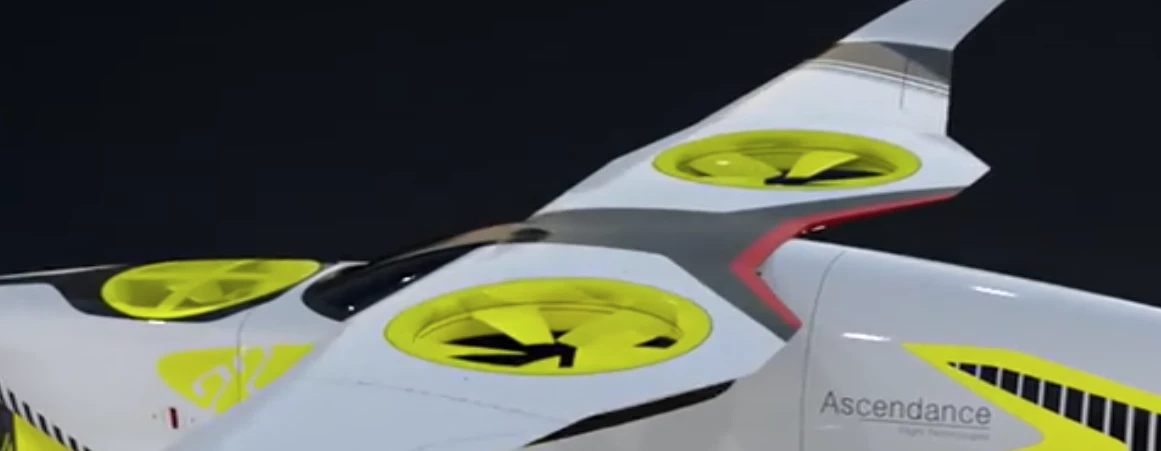Right now, the entire electric VTOL scene is a house built on a foundation of faith. Faith that the hordes of researchers beavering away on next-gen battery technology will achieve an enormous energy density breakthrough, or faith that hydrogen fuel cell powertrains will prove safe, reliable and practical in an aviation context.
Both seem likely, eventually, but the urban air taxi industry is pushing to be up and running within five years, and right now there's no powertrain on the market that can keep these energy-intensive vertical-lift birds in the air long enough to be practical in a commercial sense.
France's Ascendance sees an opportunity for an intermediate step. The company was founded by four ex-Airbus employees who worked on the groundbreaking E-Fan project, which back in 2015 became the first electric aircraft to cross the English Channel. Now, the team is working on a hybrid initiative to make long-range, low-emissions VTOL flight a reality even before the battery and hydrogen guys make their breakthroughs.

The company's first project is the Atea aircraft shown at the top. While many eVTOL designs use wings, none looks as close to a standard small plane as this one. The fuselage, forward propeller, and T-shaped tail look entirely familiar instead of alien and sci-fi like some of the competition. It's clearly designed to be just as comfortable taking off and landing on airstrips as vertipads.
When it's time for VTOL operations, it rises vertically on just three medium-sized five-bladed fans, one in each wing and one ducted right through the front of the fuselage. Interestingly, these props appear to have no central hub. Instead, the middle is vacant and the blades are driven from the outer circumference of each fan. It looks pretty neat, and allows the fans to be mounted neatly in holes in the wings, but it seems like a mechanically inefficient way to run a prop; the motors need to spin faster at the outside edge to develop thrust than they would in the middle.

On the front of the plane, there's a regular propeller for efficient horizontal flight. Certainly not as efficient as you'd get out of a fully tilt-rotor design like Joby Aviation's aircraft; the VTOL fans, left uncovered, will cause some drag. But tilt-rotors are relatively complex, and static rotors like these are simple. With simple comes cheap, and since Ascendance won't be relying solely on batteries, efficiency becomes less important.
Details on the powertrain are as yet not available; presumably, we're looking at a small to medium sized battery capable of handling the high power and energy requirements of VTOL operations, with an efficient gasoline-powered range extending generator on board.
In a presentation at this year's Mobility Shaker event, Ascendance's Jean-Christophe Lambert claimed this hybrid system would reduce emissions by 50-80 percent compared with a helicopter. The company hasn't made any claims about range at this stage, but points out that right now, fossil fuel stores some 50 times the energy of current lithium batteries per weight.
So while it's not the all-electric future we're all hoping for, it's still a positive step that could bring significant carbon savings in the next 10 years while giving these next-gen VTOL air taxis proper inter-city range figures with fast refueling/recharging at each stop. And Ascendance, like everyone else, is looking forward to the point where pure battery-electric or hydrogen-electric systems will do the trick.
Source: Ascendance





